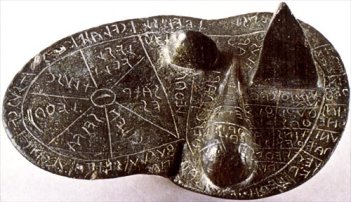
The Melammu ProjectThe Heritage of Mesopotamia and the Ancient Near East |
The Melammu Project
General description
Search string
Browse by topic
Search keyword
Submit entry
About
Open search
Thematic search
Digital Library
Submit item
Ancient texts
Dictionaries
Projects
Varia
Submit link
FAQ
Contact us
About
The Newsletter
To Project Information >
The liver models (1) |
Printable view |
|
Topics (move over topic to see place in topic list) 05 Scientific knowledge and scholarly lore 05 Scientific knowledge and scholarly lore |
Keywords extispicy omens |
|
Period Middle Assyrian Empire |
Channel Etruscan culture Hittite culture Iconographic tradition |
|
Text
Bibliography
Amar Annus
|
Illustrations (click an image to view the full-size version in a new window)
 |
Fig. 1: Etruscan bronze liver found at Piacenza. |